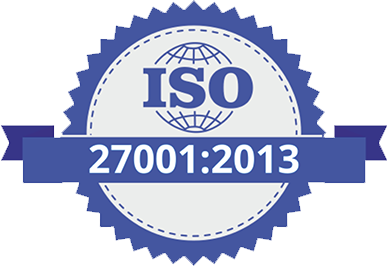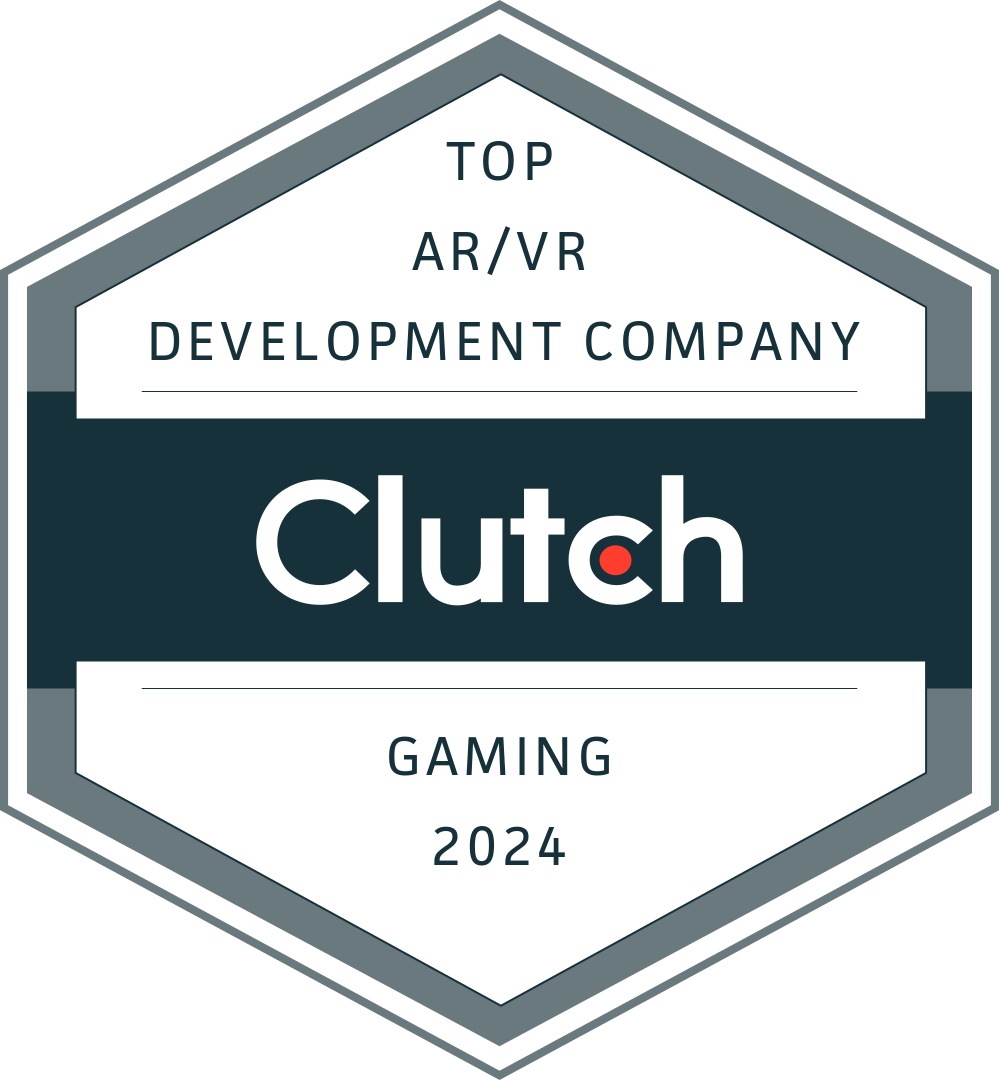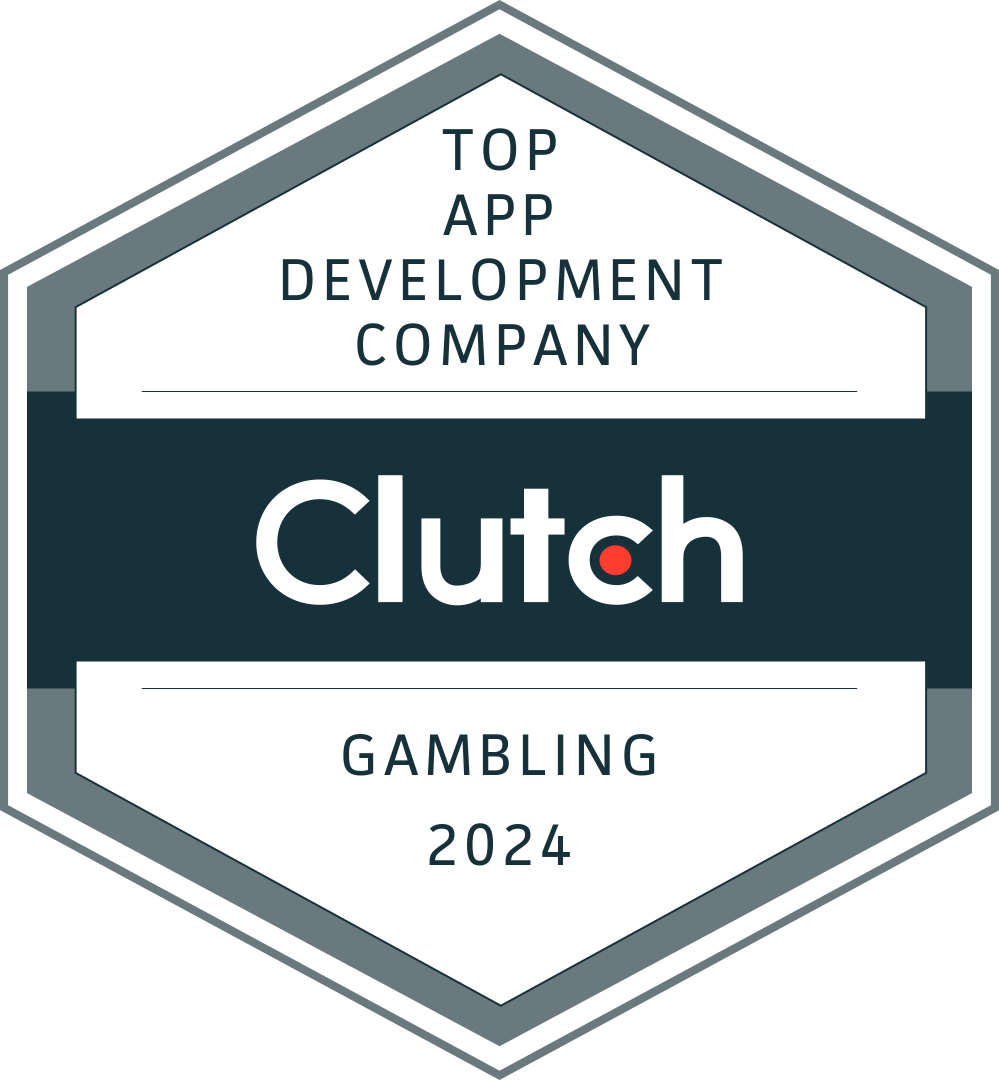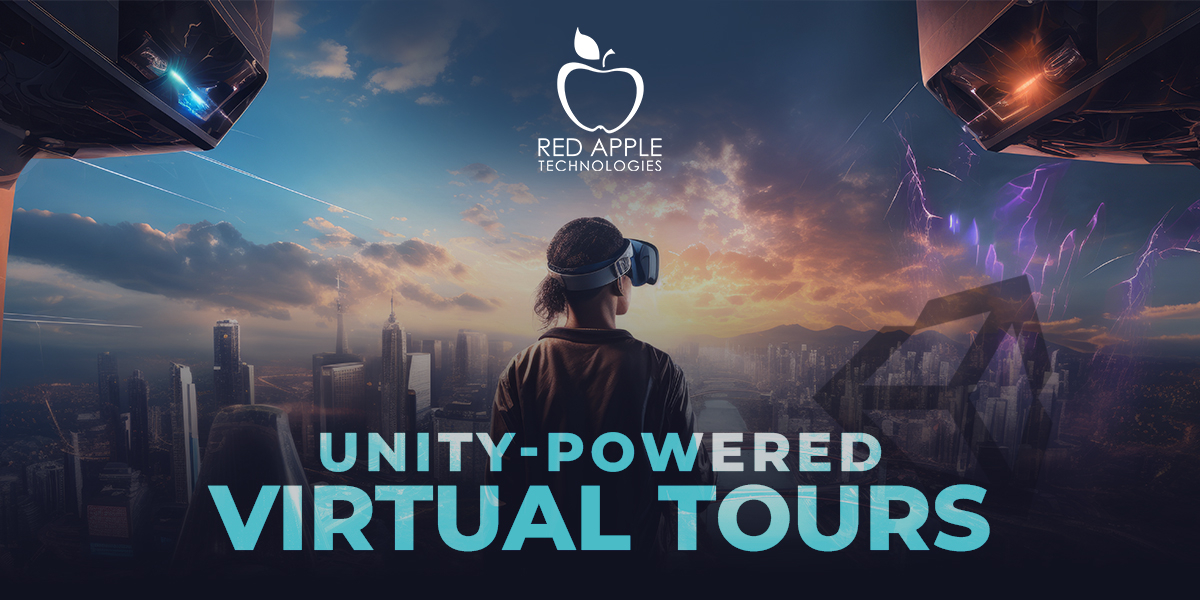
Remember how travel used to begin the moment you stopped out your door. Well, today it often begins the moment you open an app. Immersive tourism experiences like virtual museum tours, AR-enhanced site guides, photogrammetry-driven reconstructions, and WebGL “visit-from-home” experiences are reshaping how people discover, plan and engage with destinations. At the center of many of these projects is Unity, a flexible, real-time engine that enables creators to deliver interactive, high-fidelity experiences across headset, mobile, and web.In this post, we explain the use of Unity for immersive experiences with tourism products, why destinations benefit, the technical and UX patterns that work, and practical advice for teams looking to start a project.
Why Immersive Tourism Matters
Imagine yourself standing in the ruins of an ancient amphitheater. You hear the echoes of past performances, witness the stage reconstructed in vivid color, and walk among virtual actors reenacting history. Or maybe flat photos of a UNESCO heritage site are not cutting it for you anymore. Now you can explore a UNESCO heritage site from your living room in a fully navigable 3D space with a story in every corner.
Science fiction? No. They are examples of immersive tourism powered by AR & VR app development. The benefits stretch far beyond novelty. Destinations gain digital preservation tools for fragile heritage, educational institutions create living classrooms, and hospitality businesses use immersive products to drive engagement and booking conversions.
So, are we talking about replacing the real feeling with a non-tangible reality? Not at all. When done well, these experiences don’t replace travel but enhance it. They spark curiosity, give travelers a taste of what awaits, and often lead to stronger intent to visit in person.
What Unity Offers
It is a practical engine for building immersive tourism experiences because it balances real-time rendering, cross-platform publishing, and a mature ecosystem of XR tools. Developers use Unity to:
- Publish to multiple targets: native VR headsets (Quest, Rift), mobile AR (iOS/Android), and WebGL browsers.
- Integrate AR Foundation and XR Interaction Toolkit for reliable tracking and standardized interactions.
- Employ photogrammetry in production pipelines (scanning > retopology > bake) while using Level of Detail (LOD), Addressables, and URP/HDRP choices to optimize performance.
By choosing Unity for immersive experiences, teams get rapid iteration, a large pool of developers and plugins, and built-in support for interaction models common in tourism: teleportation, guided narration, hotspot-driven POIs, and analytic hooks.
Types of Immersive Tourism Products Unity Teams Build
- 360° Photo/Video Tours: Fast to produce and effective for hotels, rental properties and simple site previews. Unity acts as an interactive viewer with hotspots, narration, and embedded booking links.
- Photogrammetry-Based Virtual Walkthroughs: High-fidelity reconstructions of archaeological sites, museums, or heritage buildings. These can run on PC VR or be optimized for WebGL with streaming assets.
- On-site AR Guides: Location-aware overlays that enhance a visitor’s real-world experience with historical reconstructions, wayfinding, language translations, and contextual media.
- Hybrid Experiences: Synchronized remote and on-site experiences — remote visitors explore a virtual reconstruction while on-site visitors access AR layers that complement the physical tour.
- Educational & Gamified Tours: Curriculum-integrated experiences for schools, gamified trails for families, or scavenger hunts that increase dwell time and learning outcomes.
Building for Experience, Not Just Technology
Tourism apps succeed when they feel effortless to the visitor. Onboarding needs to be simple, controls intuitive, and the experience comfortable for both tech-savvy travelers and first-time users. A seamless teleportation system can prevent motion sickness; multilingual captions and voiceovers ensure inclusivity; layered content allows casual visitors to skim, while curious learners can dive deeper.
These choices are not add-ons but essential to turning technology into an experience. An AR guide without localization may frustrate international travelers; a virtual tour without analytics cannot prove its marketing value. Unity provides the tools, but it’s the development process that shapes whether an immersive tourism product delights or disappoints.
UX Patterns that Retain Visitors
Tourism UX in XR must be humane and practical. Effective patterns include:
- Short Onboarding: Teach controls in 30–60 seconds; provide a “try mode” before the guided tour.
- Anchored Hotpots: Spatially stable POIs with concise content (audio + captions + image/video).
- Comfort Options: Offer teleport and smooth locomotion; vignette options for motion comfort; adjustable interpupillary distance in headset builds.
- Layered Content: Surface the basic facts first, then allow deeper dives (3D artifacts, archival video, scholarly notes) to suit different audiences.
- Accessibility: Captions, audio descriptions, simple control fallbacks (touch, gaze), and language localization.
Technical Considerations and Pipelines
Creating photoreal virtual tours demands a disciplined pipeline:
- Capture: High-resolution photos, lidar or structured-light scans.
- Processing: Photogrammetry software (RealityCapture, Metashape) to create dense meshes; cleanup in Blender/ZBrush.
- Optimization: Retopology, normal/occlusion baking, LODs, texture atlasing, and Addressables streaming for memory management.
- Interaction Layer: Build navigation, POIs, analytics events, and booking or CMS integrations in Unity.
- Testing: Device matrix (mobile, web browsers, VR headsets), accessibility review, motion-comfort testing.
If your organization lacks an internal XR team, an app development company that specializes in AR/VR can handle capture, development and deployment, but choose partners with a clear photogrammetry and UX track record.
Commercial Models & KPIs that Matter
Immersive tourism projects are most successful when tied to measurable business goals:
- Marketing & conversion: track time-on-tour, hotspot click-throughs, and conversion-to-booking from tour CTAs.
- Education & outreach: measure completion rates, quiz scores, and class adoption.
- Access & inclusion: gauge remote attendance and post-experience intent to visit physically.
- Sponsorship & monetization: in-app sponsorships, paid premium tours, or AR guide subscriptions.
Set up analytics from day one: instrument hotspots, playback events, and CTA clicks. This data lets you iterate narratively and technically.
Pitfalls to Avoid
- Overfidelity without optimization: photogrammetry looks fantastic but will tank framerates without LODs and baking.
- Skipping analytics: a beautiful tour without measurement leaves ROI unknown.
- Ignoring accessibility: exclude users and miss bookings if you don’t provide alternatives.
- Platform mismatch: building only for high-end VR will limit reach; WebGL or mobile AR may be better for mass engagement.
Getting started — A Pragmatic Roadmap
- Define the outcome: awareness, bookings, education, or inclusion?
- Choose a scope for a prototype: one room or one trail with 4–6 hotspots.
- Capture & build: begin capture while your Unity developers set up the interaction scaffold.
- Launch a pilot: deploy as WebGL for marketing reach and gather engagement data.
- Iterate: improve content, add languages, test native VR builds for premium experiences.
For organizations that want an outside partner, clearly state the deliverables, platforms and KPIs you expect from the start. If you’re ready to move quickly, many teams prefer to hire Unity developers for AR/VR to create a vertical prototype that proves both technical feasibility and user engagement.
Enter Red Apple Technologies
This is where expertise makes all the difference. We have positioned ourselves as Unity Engine specialists with years of experience in creating interactive, visually rich, and scalable solutions. Our team has worked across AR/VR app development projects that range from educational simulations to large-scale entertainment, and we bring that same depth of knowledge to tourism.
When destinations or businesses partner with us, we begin with a discovery phase: understanding the audience, defining outcomes, and mapping the right platforms. We bring in our in-house Unity developers, 3D artists, and UX designers to create prototypes that let stakeholders test and refine ideas early. Photogrammetry workflows, performance optimization, accessibility design, and analytics integration are all part of our standard approach.
What sets us apart is not only technical ability but also storytelling. Tourism is about emotions, history, and culture. Our Unity teams are skilled at weaving narrative into interactivity, ensuring that every virtual tour or AR guide is not just functional but memorable. Whether it’s preserving heritage sites for future generations, building AR apps that guide visitors through landmarks, or creating marketing-ready virtual previews of destinations, we help organizations translate vision into immersive reality.
If your goal is to inspire travelers, attract bookings, or offer education beyond borders, our expertise ensures your project is built for both impact and scalability. In short, if you’re ready to hire Unity developers for AR/VR experiences, Red Apple Technologies can be your trusted partner.
Team & Hiring Guidance
A practical team for a mid-range immersive tour includes:
- Lead Unity developer (XR): builds interactions, performance optimization, cross-platform exports.
- 3D artist / photogrammetry specialist: capture pipelines, retopology, texture baking.
- UX designer: XR-first interaction and accessibility.
- Backend/CMS developer: for content updates, booking integrations, and analytics.
- QA specialist: device testing and comfort checks.
- Audio & localization: narration, multi-language support.
The Future of Travel is Hybrid
As travel continues to evolve, immersive tourism will not remain a side offering. Instead, it will blend seamlessly into the journey, from dreaming and planning to exploring and reflecting. Tourists may discover a destination through a Unity-powered web experience, enhance their on-site trip with an AR app, and revisit the memories later in VR.
For businesses and cultural institutions, this opens endless opportunities: broader global reach, stronger customer loyalty, and new ways of generating revenue. But success depends on choosing the right technologies, the right partners, and above all, keeping the visitor experience at the center.
Unity offers the technical foundation. Red Apple Technologies brings the expertise to shape it into a compelling story. Together, they open the doors to a new era of tourism — one where travel begins not with a ticket but with an experience.
To Have A Better Understanding On This Let us Answer The Following Questions
How do immersive tourism experiences enhance real-world travel rather than replace it?
Answer: Immersive tourism experiences, such as virtual tours or AR-enhanced site guides, serve as pre-visit engagement tools that inspire travelers to explore destinations physically. They provide deeper cultural context, storytelling, and education before arrival. Rather than substituting real travel, they increase trip intent, satisfaction, and connection by making destinations more familiar and meaningful.
What technical skills or team roles are essential for developing immersive tourism apps in Unity?
Answer: Successful immersive tourism projects typically require a multidisciplinary team, including:
- Unity developers experienced in XR interaction and optimization
- 3D artists or photogrammetry specialists for accurate asset creation
- UX designers focused on accessibility and comfort
- Audio and localization experts for narration and multi-language support
QA testers to ensure performance across VR, mobile, and web
Collaboration among these roles ensures the experience is technically stable and narratively engaging.
How can destinations measure the success or ROI of immersive tourism products?
Answer: Key performance indicators (KPIs) include:
- Engagement metrics: time-on-tour, hotspot interaction, and completion rates
- Conversion metrics: click-throughs to bookings or ticket purchases
- Educational metrics: quiz scores, adoption in classrooms, or repeat usage
- Access metrics: number of remote visitors or new audiences reached
A solid analytics setup from the start enables data-driven improvement and clearer ROI tracking.
What are the main challenges developers face when building photorealistic virtual tours?
Answer: Major challenges include balancing visual fidelity with performance, managing large photogrammetry datasets, and ensuring compatibility across devices. Developers must optimize assets through retopology, texture baking, and Level of Detail (LOD) systems. Without these optimizations, virtual tours risk long loading times, motion discomfort, or limited reach on mobile and WebGL platforms.
How can immersive tourism experiences be made inclusive and accessible to all users?
Answer: Accessibility must be built in from the start. Best practices include:
- Captions and audio descriptions for all media
- Simplified controls with gaze or touch fallback
- Comfort settings (teleport locomotion, vignette options) for VR users
- Multilingual interfaces and cultural localization
Designing for inclusion not only widens the audience but also aligns with tourism’s mission of universal access and cultural understanding.

























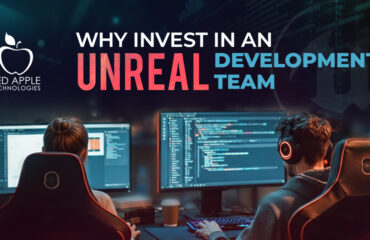



 Book an Appointment
Book an Appointment Get Instant Project Estimation
Get Instant Project Estimation WhatsApp Now
WhatsApp Now






 Book An Appointment
Book An Appointment WhatsApp
WhatsApp




